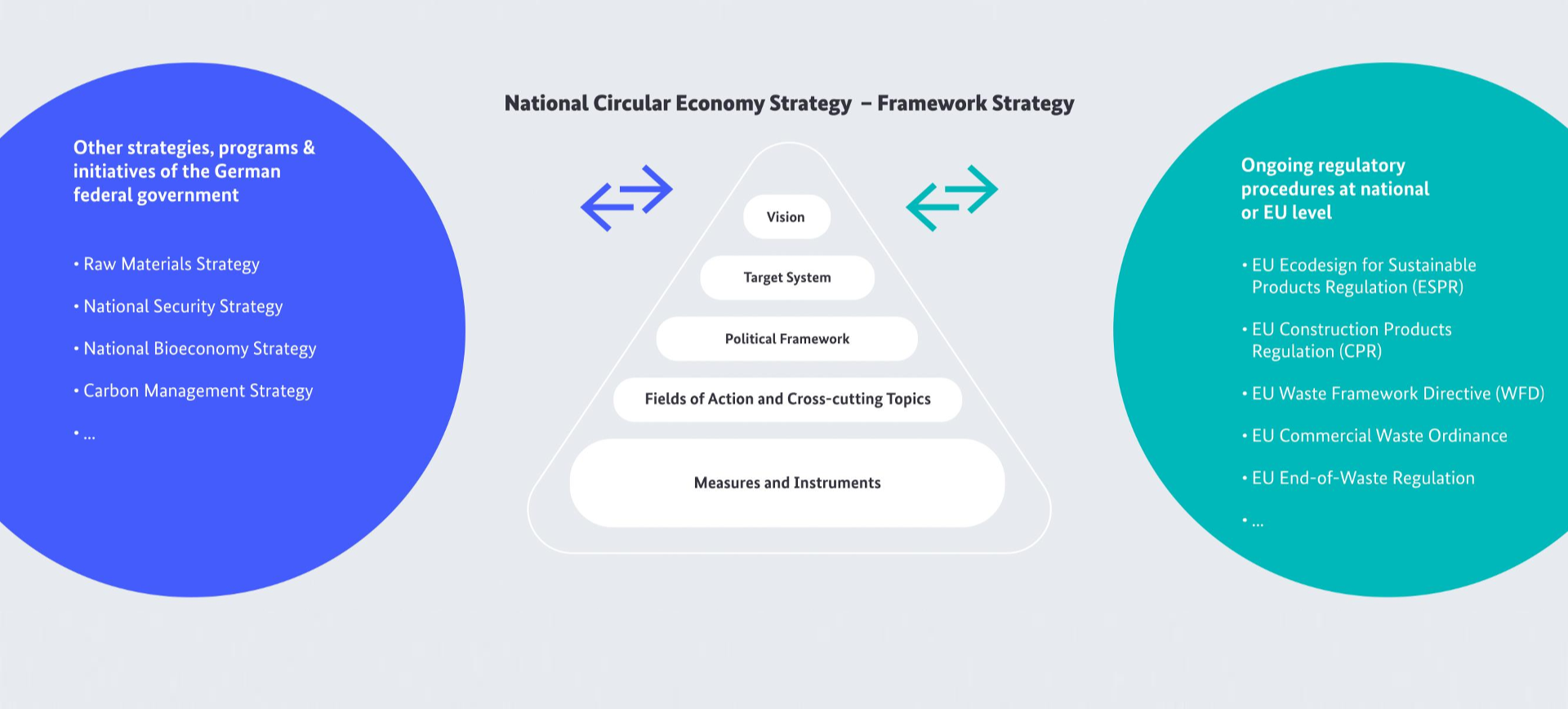The NCES – a strategy that outlines an overall framework with interfaces to other federal government strategies
The development of a balanced, achievable, yet ambitious National Circular Economy Strategy (NCES) for Germany requires the integration of various disciplines and perspectives. Accordingly, multiple federal ministries were involved in shaping the action areas, and the NCES was coordinated as a framework strategy across the government. Interfaces with existing national and European strategies, as well as ongoing legislative processes, were also taken into account.
As an overarching strategy, the NCES aims to consolidate objectives and measures for advancing the circular economy and conserving resources across all raw materials policy strategies. The strategy seeks to leverage synergies while also identifying potential goal conflicts.
At the same time, the strategies contributing to the goals of the NCES are intended to remain autonomous:
- The German Sustainable Development Strategy serves as a key starting point and overarching framework for the NCES.
- The Federal Government’s Raw Materials Strategy establishes the use of secondary raw materials as a cornerstone of sustainable and secure raw material supply.
- The German Resource Efficiency Programme integrates its objectives and measures into the NCES, including resource efficiency initiatives.
- The National Bioeconomy Strategy promotes a circular bioeconomy, emphasizing the natural recyclability of biogenic resources.
- The Federal Government’s Lightweighting Strategy focuses on enhancing recyclability and circularity in lightweight construction. It also leverages the potential of material-efficient, sustainable lightweight construction technologies to advance climate and resource protection.
- The Carbon Management Strategy targets the closure of carbon cycles and the reuse of carbon previously emitted as CO₂.
- The National Security Strategy takes a comprehensive approach to security, incorporating resource policy to address critical dependencies and ensure supply security as part of national security considerations.
Additionally, the NCES aligns with existing European strategies and ongoing legislative processes, which have been taken into account.

Cross-cutting issues and action areas of the strategy
The NCES envisions integrating the principles of a circular economy more deeply into the design, manufacturing, and use phases of products, as well as into lifestyles and business models. To achieve this, the following overarching approaches and cross-cutting topics have been identified:
- The 10 R-Strategies
- Product design for circularity and longevity
- Sustainable consumption and trade
- Standardisation
- Economic instruments and financing
- Pollutant removal
- Circular bioeconomy and biogenic raw materials
- Global material flows
- Research and development
- Qualifications and training
- Waste prevention and recovery
In addition to these cross-cutting issues, the NCES outlines overarching goals, measures, and instruments tailored to specific sectors, products, and material flows within the following key action areas:
- Digitalisation and circular economy
- Circular and resource-efficient production
- Vehicles, batteries, and mobility
- ICT and electrical/electronic equipment
- Renewable energy systems
- Clothing and textiles
- Construction buildings
- Metals
- Plastics
- Public procurement
On the next page: